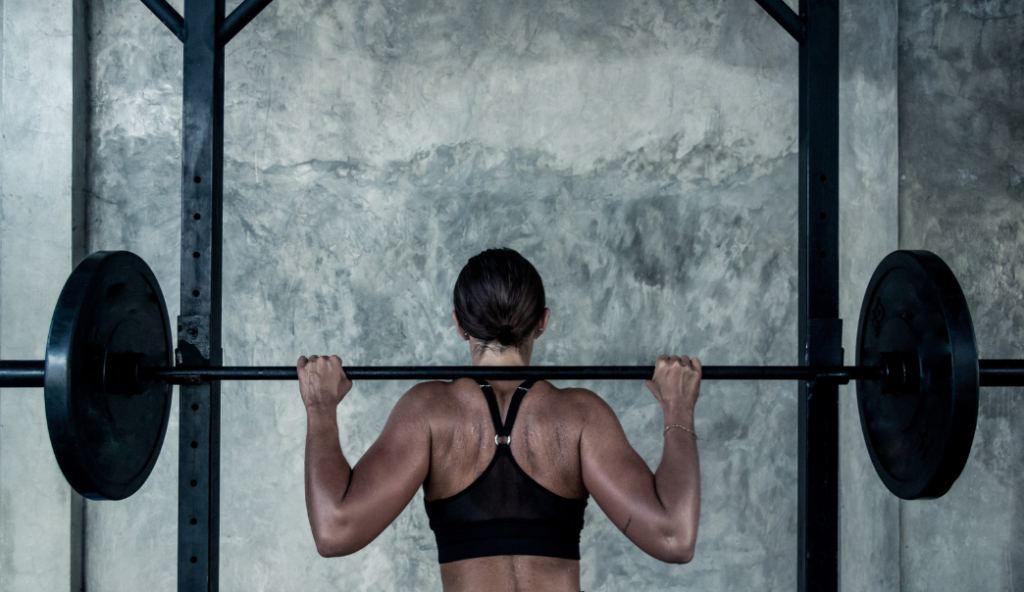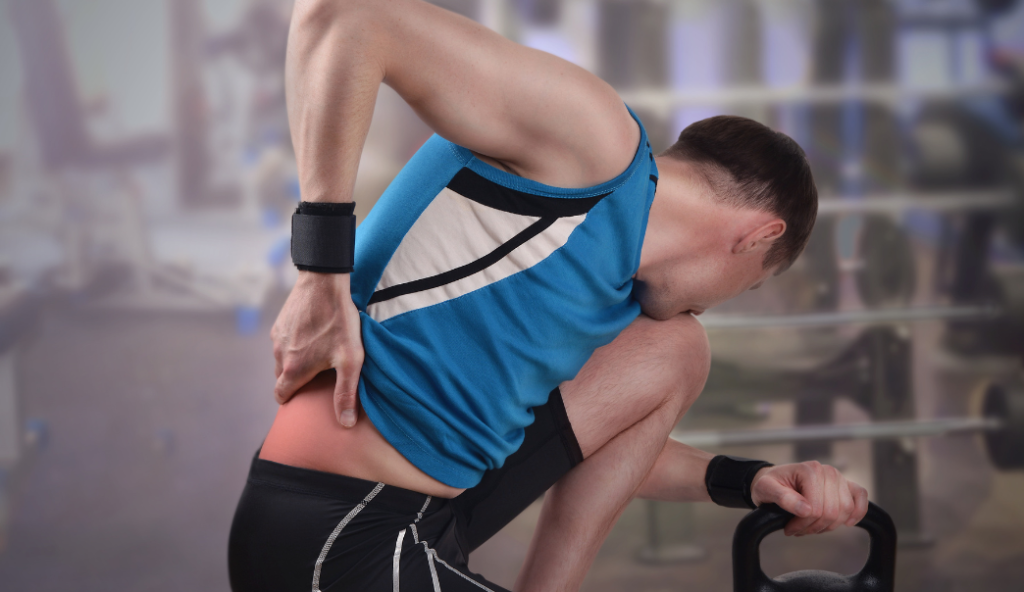Are you feeling an achy discomfort in your back after a tough weightlifting session? Don’t worry, you’re not alone. Back pain is a common complaint among weightlifters, but fortunately, there are effective ways to treat and prevent it. This article will discuss various approaches to relieving back pain caused by lifting weights and offer valuable tips to help you get back in the gym pain-free.
Identifying the Causes of Back Pain from Lifting Weights
If you’re experiencing back pain after lifting weights, it’s essential to identify the root cause to address it effectively. One of the primary culprits is poor lifting technique and form. When lifting weights incorrectly, the excessive strain on your back can lead to muscle strains or even disc herniation. Additionally, overexertion, inadequate warm-up, and weak core muscles can contribute to back pain. By pinpointing the cause, you can implement targeted treatments and make the necessary adjustments to prevent future pain.
The Role of Improper Technique in Back Pain
Using improper lifting techniques puts your back at risk of injury. Common mistakes, such as rounding your back or jerking the weight upward, can strain your spinal discs and muscles. Ensure you maintain a neutral spine position with proper alignment throughout your lifts. Engage your core and lift with your legs rather than relying solely on your back muscles. Proper technique reduces the risk of injury and helps distribute the load evenly, preventing excessive strain.
Furthermore, it’s crucial to understand the biomechanics of weightlifting to avoid back pain. When you lift weights, your muscles generate force to overcome the resistance. However, if your technique is flawed, specific muscles may be overworked while others are underutilized. This imbalance can lead to muscle imbalances and compensatory movements, putting unnecessary stress on your back. By learning the correct form and technique for each exercise, you can ensure that the workload is distributed evenly across the appropriate muscle groups, reducing the risk of back pain.

Overexertion and Weak Core Muscles
Pushing your body beyond its limits during weightlifting sessions makes you more likely to experience back pain. Overexertion can cause the muscles in your back to tire quickly and become strained. It’s essential to listen to your body and gradually increase the intensity and duration of your workouts. By allowing your muscles to adapt and strengthen over time, you can minimize the risk of overexertion-related back pain.
In addition to overexertion, having weak core muscles puts extra stress on your back, leaving it vulnerable to injury. Your core muscles, including the abdominals, obliques, and lower back muscles, are crucial in stabilizing your spine during weightlifting movements. When these muscles are weak, they cannot provide adequate support, leading to excessive strain on your back. Incorporating exercises that target the core, such as planks or Russian twists, into your training routine can help strengthen your trunk muscles and provide better stability to your spine.
Moreover, it’s important to note that a strong core helps prevent back pain and enhances your overall weightlifting performance. When your core muscles are well-developed, they act as a solid foundation, allowing you to generate more power and transfer it efficiently to your extremities. This increased stability and energy can improve your lifting technique and reduce the risk of injury, including back pain.
Immediate First Aid Steps for Weightlifting-Induced Back Pain
When back pain strikes after weightlifting, providing immediate first aid is crucial to minimize further damage and expedite the healing process. Taking these steps can alleviate pain and prevent the injury from worsening.
Apply Ice: As soon as you notice back pain, apply an ice pack or a bag of frozen vegetables wrapped in a towel to the affected area. The cold helps reduce inflammation and numbs the pain. Apply it for 15 minutes every hour for the first day or two.
Rest: It’s essential to give your body time to heal. Resting allows the muscles in your back to recover from the strain. Avoid any movements or activities that aggravate the pain. You can focus on other aspects of your fitness routine, such as cardio or stretching exercises.
Over-the-counter Pain Relievers: Nonsteroidal anti-inflammatory drugs (NSAIDs), like ibuprofen, can help relieve pain and reduce swelling. However, consulting with a healthcare professional first is essential, especially if you have any underlying conditions or are currently taking medication.
Additionally, it’s worth noting that proper form and technique during weightlifting can significantly reduce the risk of back pain. Engaging the core muscles, maintaining a neutral spine, and using appropriate weights for your fitness level are all important factors.
Incorporating regular strength and flexibility training into your exercise routine can help strengthen the muscles in your back and improve overall stability. Exercises such as deadlifts, squats, and planks can target the muscles that support the spine, reducing the likelihood of injury.
In some cases, back pain after weightlifting may be due to muscle imbalances or poor posture. Seeking guidance from a qualified fitness professional or physical therapist can help identify any underlying issues and provide specific exercises or stretches to address them.

When to Seek Medical Attention
While most weightlifting-induced back pain can be managed at home, certain situations warrant medical attention. If your pain worsens over time, is accompanied by weakness or numbness in your legs, or if you experience loss of bowel or bladder control, you should seek immediate medical assistance. These symptoms could be indications of more severe conditions, such as a herniated disc or spinal nerve compression.
Remember, it’s always better to err on caution regarding your health. Consulting with a healthcare professional can provide you with the necessary guidance and treatment options to ensure a safe and speedy recovery.
The Role of Rest and Recovery in Treating Back Pain from Lifting
Rest and recovery play a pivotal role in treating back pain from weightlifting. By allowing your body enough time to heal, you can minimize discomfort and prevent future episodes of pain.
Your muscles need time to repair and strengthen after intense weightlifting sessions. While it’s tempting to jump back into your regular routine, giving yourself adequate rest periods between workouts is crucial. Listen to your body and take breaks when needed. Incorporate rest days into your fitness schedule to prevent overexertion and allow your muscles to recover fully.
Consider engaging in low-impact activities such as walking or swimming during your rest days. These exercises promote blood circulation and help alleviate muscle tension while keeping your body active. Additionally, prioritize getting enough sleep as it plays a vital role in recovery. Aim for 7-9 hours of sleep daily to optimize your body’s healing mechanisms.
Regarding back pain, rest and recovery are about physical healing and mental well-being. Taking time off from weightlifting can help reduce stress and improve your overall mood. It allows you to step back from the demands of your fitness routine and focus on self-care.
During your rest days, you can also incorporate other forms of therapy to aid in the recovery process. For example, massage therapy can help relax tight muscles and improve blood flow to the affected area. It can also help release endorphins, natural painkillers that can alleviate discomfort.
In addition to massage therapy, you may consider incorporating stretching and flexibility exercises into your rest days. These exercises can help improve your range of motion and prevent future injuries. Yoga, in particular, is known for enhancing flexibility and promoting relaxation.
Proper nutrition plays a crucial role in the recovery process. Ensure you are consuming a balanced diet that includes adequate protein, which is essential for muscle repair and growth. Incorporate foods rich in antioxidants like fruits and vegetables to reduce inflammation and support overall healing.
While rest and recovery are essential, it’s important to note that they should not be mistaken for complete inactivity. Gentle movement and light exercise can aid healing by promoting blood flow and preventing stiffness. However, avoiding activities that may exacerbate your back pain or cause further injury is crucial.
Everyone’s recovery process is unique, and listening to your body’s cues is essential. If you experience persistent or worsening back pain, it’s advisable to consult with a healthcare professional who can provide personalized guidance and treatment options.


